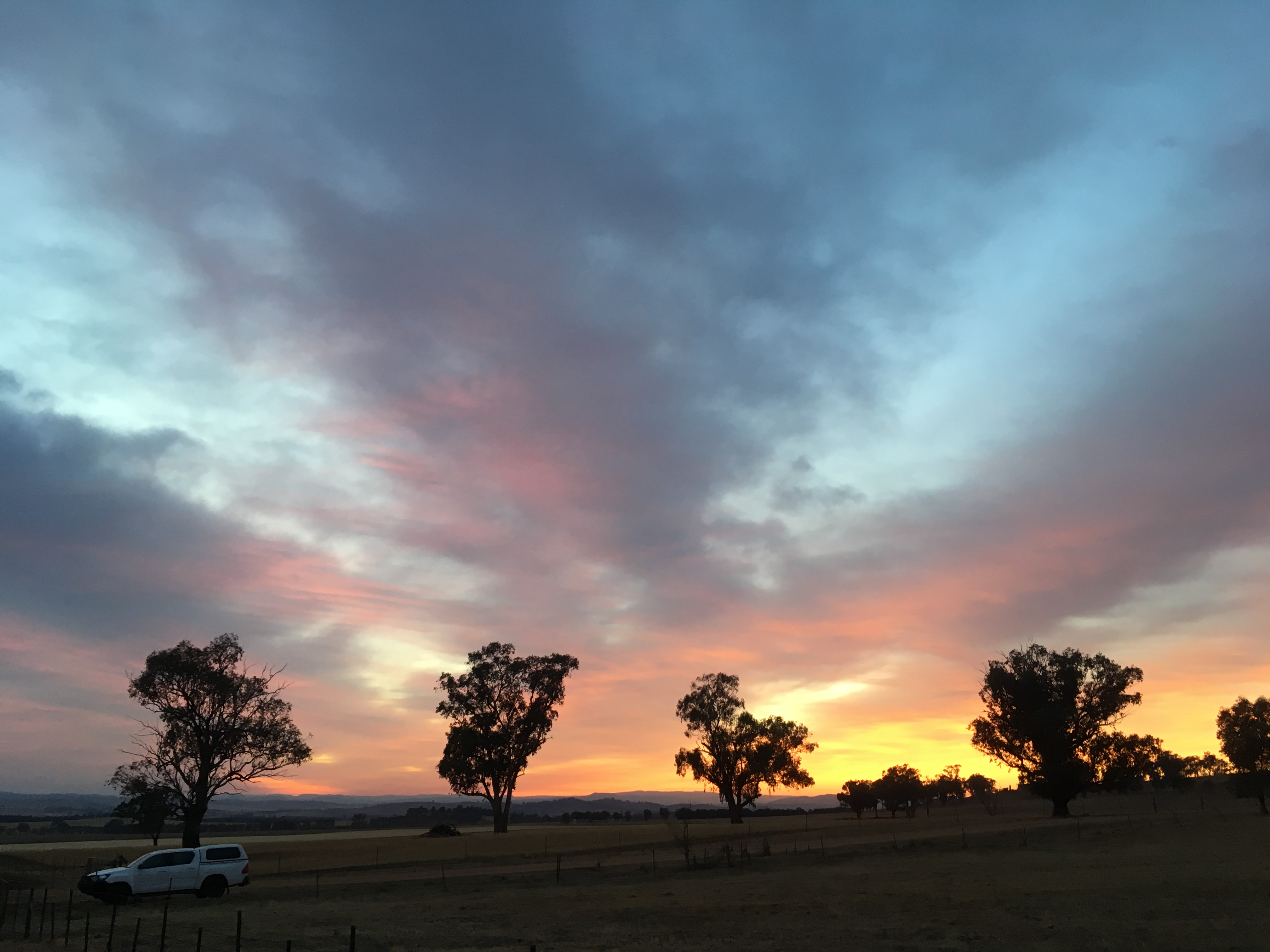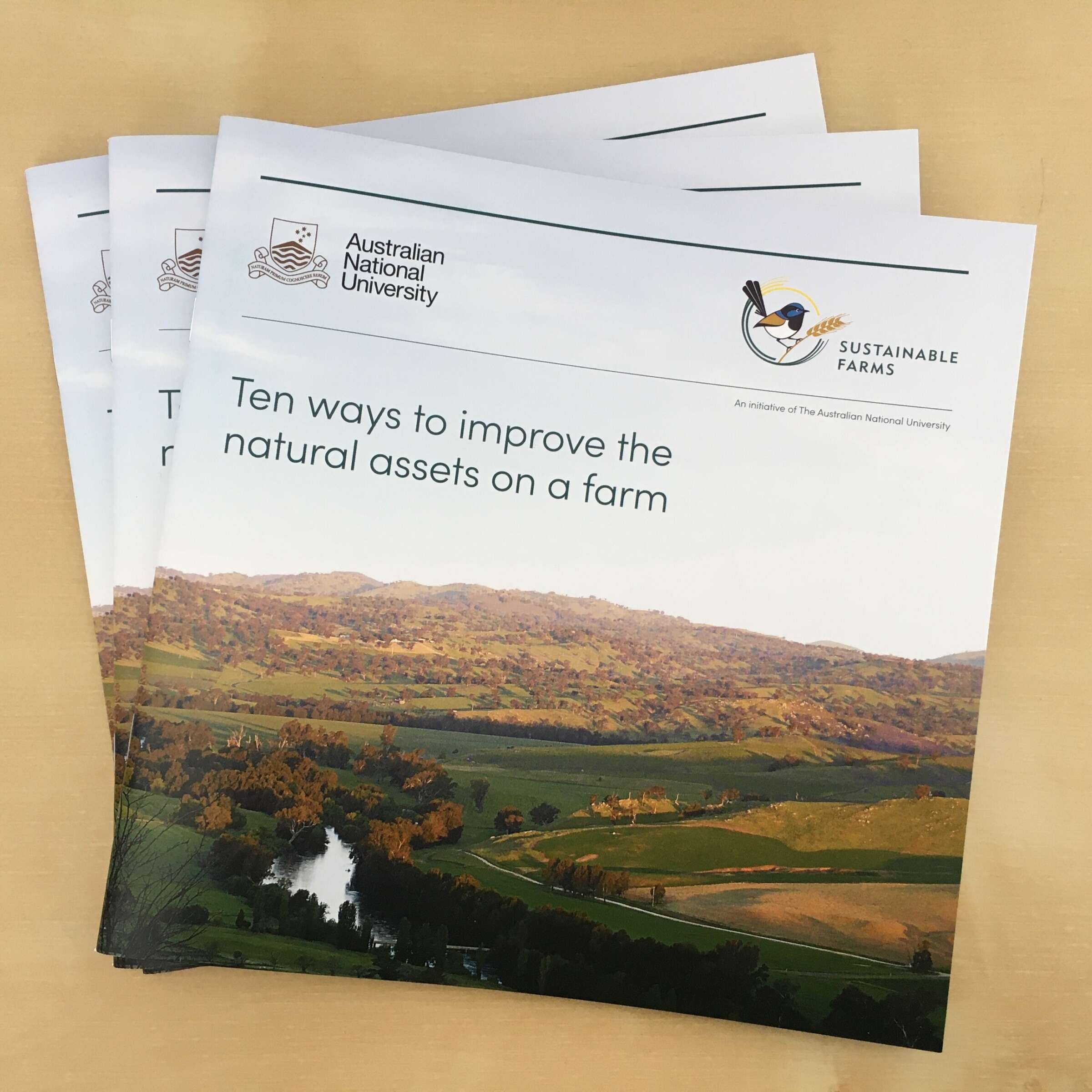
Towards healthy farms, healthy farmers and healthy profits
One small change on a farm could create new habitat for native animals and lead to increased stock productivity. That’s the message of a new publication launched this week by The Australian National University’s Sustainable Farms project.
The booklet, Ten ways to improve the natural assets on a farm, highlights ten projects that farmers can undertake to improve the health of natural assets on farms – such as dams, shelterbelts or riparian areas.
It will be provided for free to interested landholders in North East Victoria, the NSW Murray-Riverina, Central West and South West Slopes.
Produced by Sustainable Farms, a research and extension initiative of ANU, the booklet is underpinned by 20 years of long-term research into biodiversity on farms. It also represents a knowledge collaboration that’s occurred over two decades between the farmers who are undertaking management practices, and the ANU ecologists supporting farmers’ observations with science.
Many of the farmers that Sustainable Farms work with have noticed that management changes like planting a shelterbelt, fencing a creekline or protecting a paddock tree can have multiple benefits. Stock benefit through protection from the elements, and farmers have noticed improvements in biodiversity on their farm.
Dan Florance is a Sustainable Farms Research and Extension Officer based in Cowra. “ANU has been studying biodiversity on farms in the Central West region for more than 10 years,” Dan says. “In recent years there has been growing interest by farmers and NRM groups in the region in conserving some of the often overlooked assets on farms, such as rocky outcrops and scattered paddock trees.”
“Historically the value of these assets has not always been fully appreciated, and in many cases may only require minor input from the farmer for a big biodiversity gain, with productivity benefiting too,” Dan says. “It is really encouraging that so many people are getting behind projects, often self-funded, that protect and enhance on-farm biodiversity, and the growing interest from farmers in all aspects of NRM on their properties.”
Shelterbelt revegetation.
Photo: Bindi Vanzella.

Another member of the Sustainable Farms field team is Dave Smith, who was formerly based in Cowra before moving to Albury-Wodonga last year to take up the role of Research and Extension Officer in that region. Dave points to shelterbelts as a good example of natural asset enhancement that can have multiple benefits.
“Soon after planting a shelterbelt, small birds will start to colonise the young plantings and use them as places to shelter and find food,” Dave says. “As the trees and shrubs grow, more and more species colonise these plantings and eventually they can become very important habitat for threatened species like squirrel gliders and superb parrots.”
“All the while, these plantings are performing important agricultural functions like slowing winds and casting shade, which can improve pasture condition, benefit stock health and welfare, and increase stock productivity, which can ultimately lead to improved farm profitability.”
Colleen O’Malley, based in Gundagai, is one of the newer members of the Sustainable Farms team, joining us in 2019 as a biodiversity field officer. She is now coordinating the field work for the farm dams project.
“The farm dams project aims to understand how fencing and revegetating around a dam can contribute to enhanced biodiversity and production outcomes,” Colleen says. “We’ve already got some important early results from this work, including improvements to dam water quality, and the field team are now in the process of expanding this study to more farms in the region.”
As of late 2019, Sustainable Farms now has staff based in Cowra, Gundagai, Wagga Wagga, Burrumbuttock and Wodonga. Read more about the team here.
Back at The Australian National University campus in Canberra, the results gathered by the field team, and their insights into the research questions that farmers are interested in, feed into the broader interdisciplinary research program. This program is working to answer questions about how biodiversity enhancements on farms relate to productivity benefits, the financial health of farms, and the wellbeing of farmers and farming communities.
Fore more information about the Ten Ways booklet and to access a copy, click here.
Main image: Sustainable Farms ecologists Dan Florance and Dave Smith talk with a farmer at a riparian restoration site.

